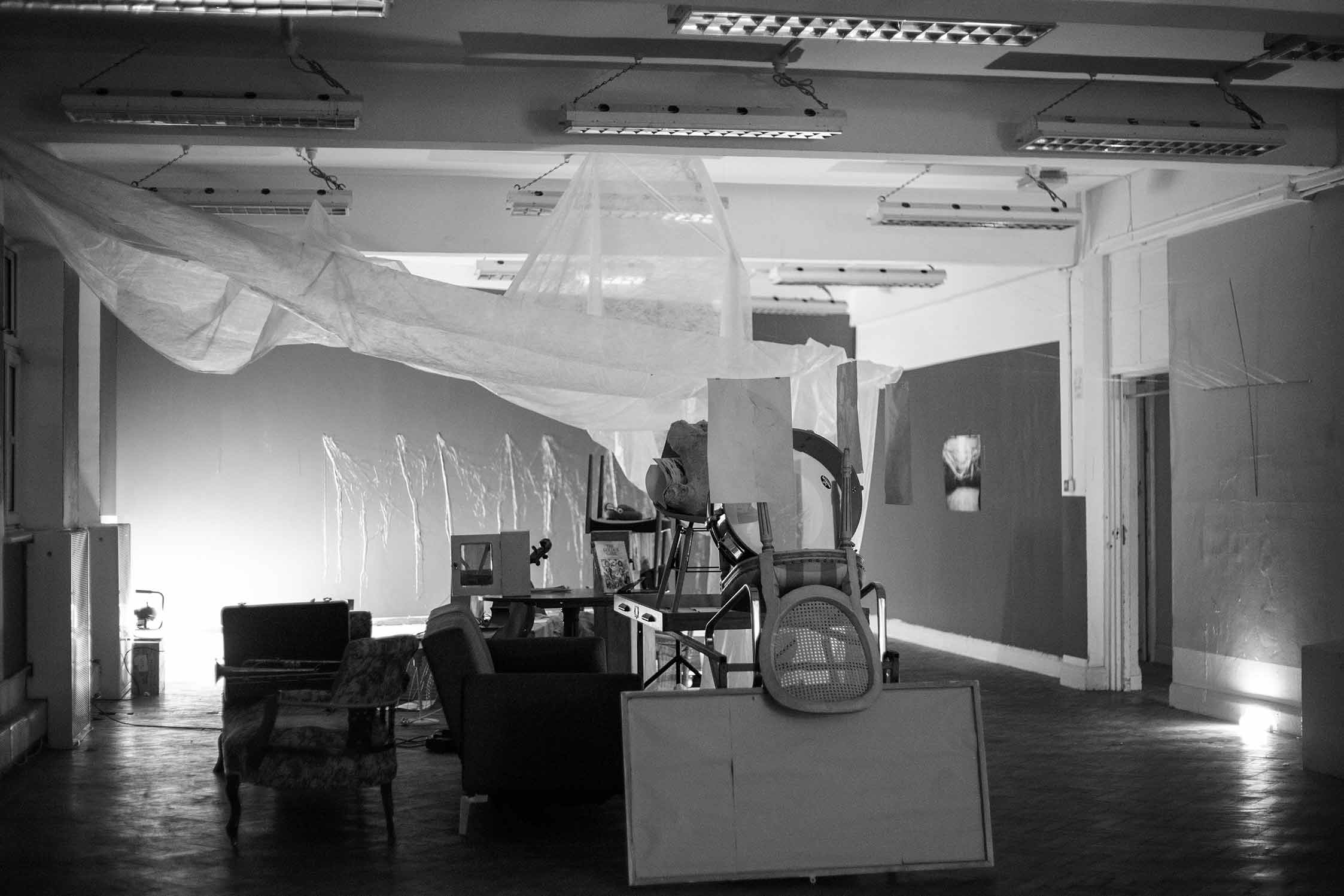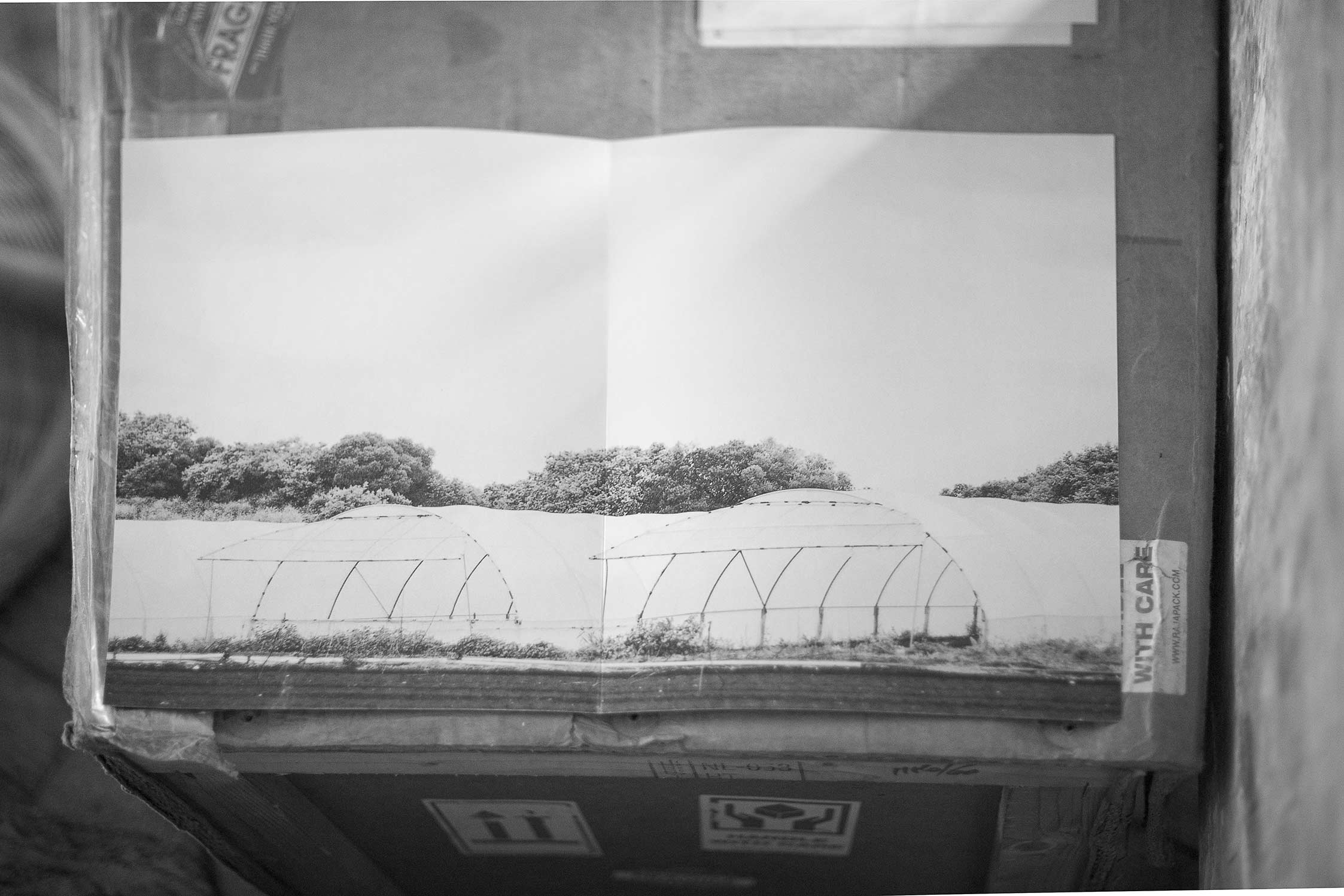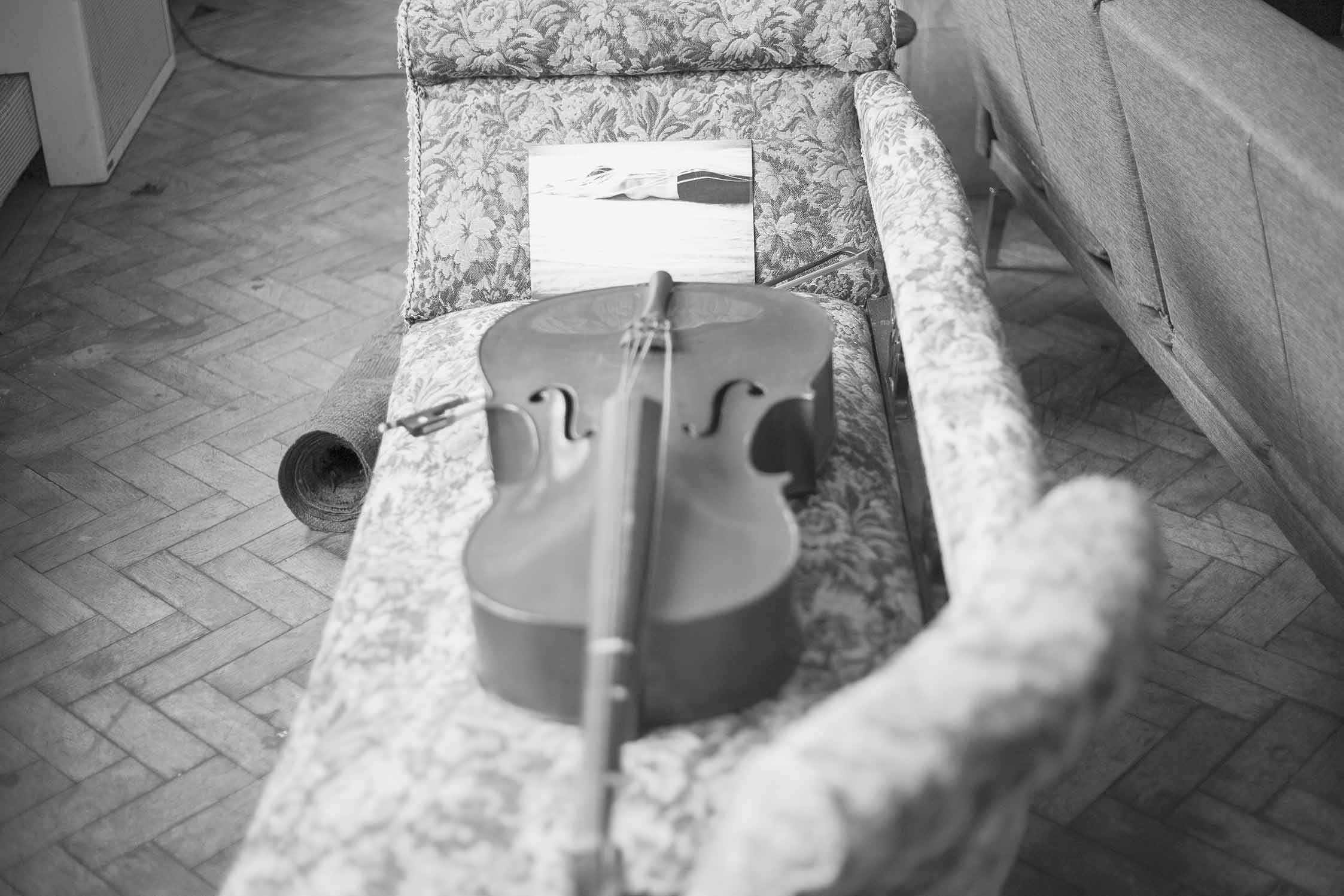

DOMENEST
paula roush + natercia caneiro
msdm Woolwich






TITLE WORK: DOMENEST
AUTHORS: paula roush + Natercia Caneira
GALLERY: msdm Woolwich
MEDIUM: Performative Installation
Hanging sculpture: White gossamer fabric,
vintage Marrakshi silver thread, 3,2 ft galvanised cross-brace, 10 silver plated flat head pins.
White chalk, pencil and silver thread on newsprint.
Assemblage of msdm house-studio-gallery items, including furniture, studio materials and collections, with b&w xerographic prints from the Systemic Observations photographic collection.
YEAR: 2021
ABOUT THE WORK
Domenest departs from an assemblage of furniture, household items, studio collections and music instruments nested under a hanging sculpture made of white gossamer fabric.
Participants are handed a card from the Domenest set for a metaphysical rearrangement of the room.






msdm has been converting buildings with unique architectural features into house—studio —gallery spaces for the past five years. A late 19th century Industrial warehouse previously used for self-storage, a warehouse unit that had been a printer’s workshop in the 1980s, a 1940s art deco electricity showroom that had also been the UK border agency offices in the 1990s and, currently, a community day centre with its own nursery and photographic dark-room facilities. These buildings are undergoing a gentrification cycle that often leads to their demolition; they have an amazing industrial heritage with an emotional resonance that inspires a continuous flow of creative output.
Another great thing in this typology of space is to be able to invite artists to make work on site, to let them build an idea, see close-up how they work, being influenced by the materials in the studio and the life outside.
DOMENEST relies on this type of collaborative approach between my work and that of Natércia Caneira, as well as experimental links between photography, sculpture, installation and performance. We started exploring these issues way before, the first time I invited Nat to show her work in London in a studio-gallery I was running with other artists on Grange Walk, Bermondsey [+more] . Nat created the hanging installation ‘Systemic Observations” and I photographed her performing with the work for the first time in what became a site-specific performance for the camera that was published as a photobook. We repeated this formula in a warehouse near Lisbon a year later so when Nat came to visit for the New Year of 2019-2020, our plan was to develop another artist’s book out of that material. As I started editing and printing the photographs on the ground floor studio, Nat started a new hanging installation on the building’s 1st floor, which led me to start moving the studio furniture and objects archive around it, and install the photographs in the emerging constellation until eventually all morphed into one piece: DOMENEST.
The work lays bare the process of photographing performative sculpture in its multiple staging of materials, bodies and architectural spaces. It raises a veil on what it is like to live on a certain location, make photography as part of an everyday practice, and let these photographs become part of the live-work-display environment. What happens when the artwork is a photographic record, a photobook and an exhibition? What is it like when these three types of space — house, studio and gallery— grow simultaneously and bleed into each other?
[pt]
Há cinco anos que venho convertendo espaços arquitetônicos únicos em casa-estúdio-galerias. Um armazém industrial do final do século 19, um outro que tinha sido uma oficina de impressão nos anos 80, um showroom dos anos 40 onde tambem foram os escritórios da agência de fronteiras do Reino Unido nos anos 90 e, atualmente, um centro de dia comunitário com seu próprio infantário.
O patrimônio industrial desses incríveis edifícios que estão passando por um ciclo de gentrificação que leva à sua demolição, tem uma ressonância emocional muito forte, que inspira novos trabalhos e proporciona um fluxo contínuo de produção criativa. Uma outra vantagem nessa tipologia de espaço é poder convidar artistas para fazer trabalho comigo, deixá-los construir uma ideia, ver de perto como funcionam, sendo influenciados pelo local, pelos materiais do estúdio e pela vida la fora.
DOMENEST resultou deste tipo de colaboração entre o meu trabalho e o de Natércia Caneira, bem como de ligações ténuas entre fotografia, escultura, instalação e performance. Começamos a explorar essas questões muito antes, na primeira vez que convidei Nat para mostrar seu trabalho em Londres, num estúdio-galeria que eu estava a comissariar com outros artistas em Grange Walk, Bermondsey. Nat criou a instalação suspensa ‘Observações Sistêmicas” e eu fotografei-a performando a obra pela primeira vez, no que se tornou uma performance site-specific para a câmera que foi publicada em fotolivro.
Repetimos essa fórmula num armazém perto de Lisboa um ano depois, e quando Nat veio a Londres para a passagem de ano 2019-2020, o nosso plano era desenvolver outro livro de artista a partir desse material. Quando comecei a editar e imprimir as fotografias no estúdio do andar térreo, Nat iniciou uma nova instalação suspensa no primeiro andar do prédio, o que me levou a começar a mover o arquivo de móveis e objetos do estúdio ao redor dela, e instalar as fotos na constelação até que eventualmente tudo se transformou numa peça.
O trabalho expõe esse processo de fotografar uma escultura performativa nas suas múltiplas encenações de materiais, corpos e espaços arquitetônicos. De certo modo levanta o véu sobre o que significa viver num determinado local, fazer da fotografia uma prática cotidiana e permitir que essa fotografia se torne parte do ambiente de vida, estudio e exposição. O que acontece quando a obra de arte é um registro fotográfico, um fotolivro e uma exposição, e quando três tipologias de espaço— casa, estúdio e galeria— crescem lado-a-lado e se fundem num só?



